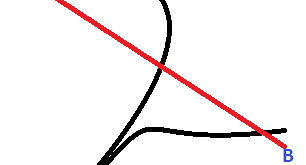INTRODUCTION TO PHYSICS
Physics is a branch of science that deals with the matter and energy.
Matter is a substance that has mass and occupies space. It exists in 3 physical states:
- Solid– They have definite volume and shape.
- Liquid– They have definite volume but they lack in having definite shape, they take the shape of the container.
- Gas– They does not possess definite volume and shape. They take the shape of the container in which they are placed.
The fourth physical state of matter is plasma. It is concluded that in the universe, 98% of the matter is in plasma form and rest 2% is in the form of solid, liquid or gas.
Plasma is found on the surface of the sun and the stars, at the center of the earth too it is abundant.
Thus, physics can be defined as the branch of science that deals with the measurement of the physical quantities.
Physical quantities are the measurable quantities. They have a definite magnitude. They may or may not have a direction.
Types of Physical Quantities
They are of 2 types:
- Scalar: The physical quantity that has only magnitude is known as scalar quantity.
Ex- Work, Energy, Power etc.
- Vector: the physical quantity that has both magnitude and direction is known as vector quantity.
Ex- Displacement, Velocity, Acceleration etc.
- Physical quantity is represented by N U (N-Numerical U-Unit).
- The measurements for the physical quantity were first introduced by Lord Kelvin.
- the standard fixed value for the physical quantities are known as
| System/Units | Length | Mass | Time |
| F.P.S | Foot | pound | sec |
| C.G.S. | Cm | gm | sec |
| M.K.S. | M | kg | sec |
FPS units are called as the British system.
CGS units are called as the French system.
CGS/MKS system is called Metric or Decimal system.
In 1960, the SI units were derived from the M K S units. SI means Standard International followed throughout the world
| Quantity | Largest unit | Smallest unit |
| Length | Parsec
1 Parsec= 3.26 Light Years |
Fermi 10-15 m
1 Fermi= |
| Mass | Chandra Shekhar Limit (CSL)
1 CSL= 1.4 X 2 X 1030 kg |
Atomic mass unit (amu)
1 amu= 1.66 X 10-27 kg |
| Time | Cosmic Year (CY)
1 CY= 250 Million Years |
Shake
1 Shake= 10-8 sec |
Note: Shake is used in the Atomic expressions.
Light year is the distance traveled by the light in vacuum in one year time. It is a unit of distance not time.
1 LY= 9.46 * 1015 m
Q.1. Which amongst the following is the state of matter?
- Plasma
- Gas
- Liquid
- All
Ans. d
Q.2. FPS is abbreviated for:
- m kg sec
- foot pound sec
- cm gm sec
- feet pound sec
Ans. b
Q.3. CGS is abbreviated for:
- cm gallon sec
- foot pound sec
- cm gm sec
- feet pound sec
Ans. c
Q.4. 1 light year is equal to:
- 9.46 * 1015 m
- 9.45 * 1015 m
- 9.46 * 1014 m
- 9 * 1015 m
Ans. a
Q.5 Choose the vector quantity:
- Work
b.Energy
- Power
- Displacement
Ans. d
Q.6. Choose the scalar quantity:
- Displacement
- Acceleration
- Velocity
- Work
Ans d
Q.7. Scalar quantities have:
- Magnitude
- Direction
- None
- Both
Ans. a
Q.8. Vector quantities have:
- Magnitude
- Direction
- None
- Both
Ans. d
 IT2EDU Empowering Education Through Technology
IT2EDU Empowering Education Through Technology

